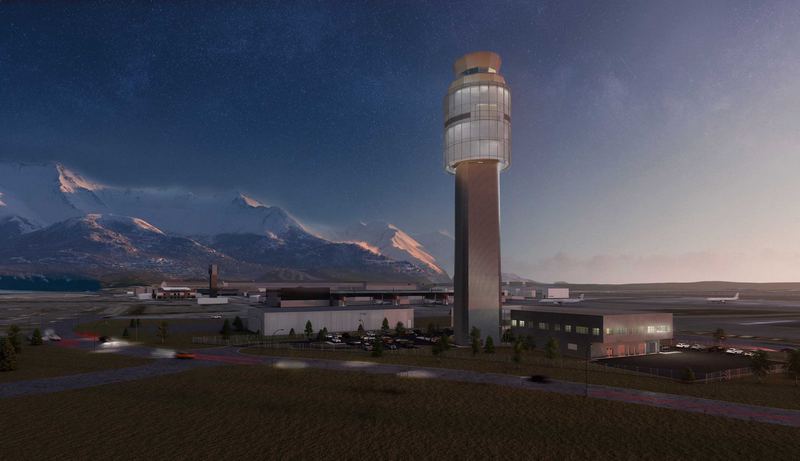
Stantec was selected by the Federal Aviation Administration to provide architecture and engineering design services for the new airport traffic control tower and terminal radar approach control base building in Anchorage, Alaska.
The facility will provide air traffic control for Ted Stevens Anchorage International Airport, which also includes the Lake Hood Seaplane Base. ANC is the gateway to Alaska and the U.S. with approximately 5.7-million passengers and more than 3 million tons of cargo passing through the airport each year. The airport, including the future ATCT and TRACON, sits on the traditional land of the Dena’ina people.
The ATCT serves as the heart of airport operations at ANC. When complete, the ATCT will be the tallest structure in Alaska at more than 300 feet tall, nearly twice as tall as the existing tower. Clad with a durable metal panel rainscreen and glazing, the 12-sided cab will improve technology and viewing to control aircraft movements. The design addresses overcrowding, incorporating additional space for supervisory and support staff, as well as National Air Traffic Controllers Association representatives.
The two-story building, adjacent to the ATCT, serves as a base for radar-approach operations, environmental and administrative functions. The design for this 35,000-square-foot building will include a metal panel rainscreen exterior façade and a low wall and roof-to-floor area ratio to improve energy efficiency.
This Risk Category IV building will include floor plans that optimize operations and maintenance and include energy-efficient mechanical, electrical and plumbing systems. Structurally, the ATCT will meet the needs of high seismic performance in a cold region to provide ANC staff with a safe and steady work environment in all conditions.
Stantec’s in-house team and subconsultants will provide architecture for both facilities, as well as civil, life safety, structural, electrical, fiber optic transmission system, ICT, mechanical and sustainability design services.


 Join our thriving community of 70,000+ superintendents and trade professionals on LinkedIn!
Join our thriving community of 70,000+ superintendents and trade professionals on LinkedIn! Search our job board for your next opportunity, or post an opening within your company.
Search our job board for your next opportunity, or post an opening within your company. Subscribe to our monthly
Construction Superintendent eNewsletter and stay current.
Subscribe to our monthly
Construction Superintendent eNewsletter and stay current.